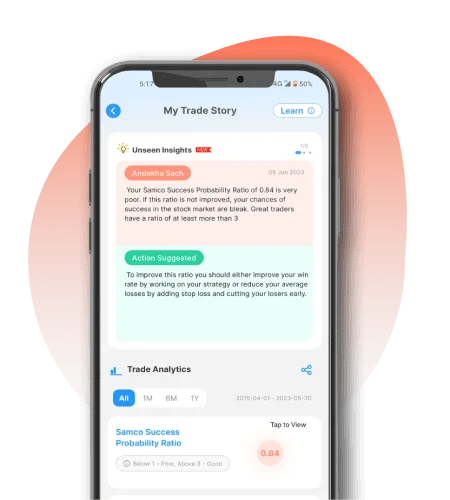Commodity trading has long played a vital role in shaping India’s economic landscape. It plays many roles, from determining agricultural prices to influencing input costs in manufacturing. It also connects producers, traders and end-users across sectors. Commodity trading in India is both an economic necessity and a measure of market efficiency, particularly given our resources and diversity.
The history of commodity trading stretches back to ancient times, when barter systems governed the exchange of goods like grains, spices and metals. Over centuries, this evolved into informal mandi systems. Eventually, they turned into the commodity exchanges we know today.
This shift marks the move from unorganised trade to regulated institutional platforms. It has increased the scale and significance of commodity markets in India's growth story. In this article, we delve into the past and the present of the Indian commodity market.
The Beginnings of Commodity Trading in India
Commodity exchange in India dates back to ancient civilisations that traded grains, spices and textiles. These goods moved through bustling ports and overland caravan routes. Early commodity trading in India operated on trust, community rules and regional trade relationships rather than formal systems or written contracts.
Before formal markets emerged, commodities were exchanged through barter. Farmers, merchants and artisans traded what they produced for what they needed. This phase shaped the early Indian commodity market and laid the groundwork for informal networks that persisted for centuries.
Then, colonial rule introduced structured trading practices and taxation systems. British influence led to organised markets in key cities and improved standardisation. This shift marked a turning point in the history of commodity trading, moving it from decentralised exchanges to more formalised systems.
The Establishment of Formal Commodity Markets
The formalisation of commodity trading in India began in 1875, with the establishment of the Bombay Cotton Trade Association. This marked the beginning of organised futures trading in India. It also gave cotton merchants a platform to manage price risks and trade with standardised contracts.
In 1893, disagreements among traders led to the creation of the Bombay Cotton Exchange Ltd. This development expanded the Indian commodity market and introduced more structured trading practices. Furthermore, it paved the way for futures markets in commodities like jute, oilseeds and bullion.
British colonial policies significantly influenced the history of commodity trading. The development of infrastructure like railways and ports made the movement of goods easier. It also enhanced market connectivity and supported the growth of commodity exchanges across India.
Post-Independence Developments and Government Intervention
Post-independence, the Indian government took many major steps to regulate and stabilise the commodity markets. These reforms reshaped commodity trading in India. Here are the key developments that defined this phase of structured intervention and market control:
- Forward Contracts (Regulation) Act, 1952: After independence, India needed to regulate commodity trading. The government enacted the Forward Contracts (Regulation) Act in 1952. This law aimed to control speculative trading and bring stability to the market. It led to the establishment of the Forward Markets Commission in 1953 to oversee commodity derivatives in India.
- Role of the Food Corporation of India (FCI): In 1965, the government set up the Food Corporation of India (FCI). Its purpose was to ensure food security and fair prices for farmers. FCI procures food grains at minimum support prices and maintains buffer stocks. This intervention stabilised prices in some segments of the Indian commodity market.
- Impact of the Green Revolution: The Green Revolution, which began in the 1960s, introduced high-yielding varieties of wheat and rice. This increased food production significantly, but it also reduced the cultivation of indigenous crops in the country. This shift also transformed the landscape of commodity trading in India.
Modernisation and Technological Advances
The early 2000s marked a turning point in the history of commodity trading in the country. The MCX (Multi Commodity Exchange) and the NCDEX (National Commodity & Derivatives Exchange) were both launched in 2003. These electronic platforms replaced floor-based systems and made commodity trading in India quicker, transparent and more accessible.
The use of commodity derivatives in India, such as futures and options, rose sharply thereafter. These tools help traders hedge risks and discover fair market prices. Today, the following commodities are commonly traded in India:
- Precious metals like gold and silver
- Base metals like lead, copper, aluminium and zinc
- Energy resources like crude oil and natural gas
- Spices like jeera, coriander and turmeric
- Agricultural products like wheat, barley, pepper, soybean, castor seed etc.
- Fibres like cotton
The Role of Commodities in India’s Economy
Agricultural commodities, metals and energy products form a large part of India’s economic activity. They contribute significantly to GDP and drive rural incomes. This makes commodity trading in India more than just a financial activity. It has become a key part of national growth and resource distribution.
The trading of commodities also supports millions of jobs, from farmers and transporters to warehouse workers and traders. In rural India in particular, the Indian commodity market offers livelihood opportunities, improves price realisation and promotes more organised trade channels.
India also plays a crucial role in global trade for gold, crude oil, and crops like rice and spices. This is why changes in global benchmarks tend to influence domestic prices. It just goes to show how commodity derivatives in India are used to manage exposure to international market volatility.
Regulatory Framework and Challenges
Commodity derivatives in India are regulated by SEBI, which oversees the exchanges and protects investors. The regulatory body has strict compliance measures and surveillance systems in place.
In 2015, the Forward Markets Commission merged with SEBI. This integration strengthened oversight and brought the Indian commodity market under a unified regulatory framework for better governance.
Despite these improvements, the following challenges remain:
- Market Volatility: Sudden price swings can impact farmers, traders and small investors. This makes returns unpredictable and often risky.
- Speculation and Manipulation: Excessive speculative activity can distort prices and reduce trust in the market. This is a disadvantage to genuine participants.
- Lack of Awareness: Many potential users still do not understand how commodity markets work or how to benefit from them.
- Insufficient Infrastructure: Inadequate warehousing, grading and logistics create bottlenecks. This is particularly common in perishable or regional commodities.
- Rural Market Access: Many rural producers remain outside formal trading systems due to digital gaps, language barriers and lack of broker networks.
Conclusion
While challenges like volatility and limited rural access persist, India’s commodity market has shown resilience and adaptability over time. From ancient barter systems to tech-driven exchanges, the history of commodity trading in India has been marked by a steady shift toward efficiency and scale.
Today, it plays a key role in the economy, influences prices and trade policy and generates employment. Looking ahead, commodity trading in India is set for growth. Improved infrastructure, digital access and global linkages are all expanding the market. New commodities and smarter regulations will likely attract wider participation and increase its economic impact.








 Easy & quick
Easy & quick